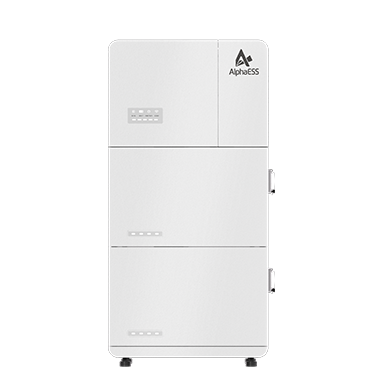Energy Storage Integrated with EV Charger: Powering the Future of Mobility
2024-09-20
The global push towards electric vehicles (EV) is accelerating, driven by ambitious targets such as China's New Energy Vehicle Industry Development Plan and Europe's projected growth in EV adoption. With EVs set to become a significant portion of the automotive market, the integration of EV charging with renewable energy sources like solar photovoltaics (PV) emerges as a crucial trend for sustainable transportation solutions.
What's the benefits of the combination of Solar Energy and EV Charger?

Reduce EV Charging Costs
Battery energy storage allows homeowners to shift charging to times when electricity is cheaper or more abundant, reducing costs for charging EVs. By storing energy during low-cost periods and using it during peak times when prices are higher, users can save significantly on electricity bills. This strategy not only reduces costs but also maximizes profitability per charge. With an integrated solar-storage-charging solution, homeowners can efficiently manage energy, further enhancing savings by using solar power to charge both the home and EVs. This smart energy management approach optimizes usage, reduces reliance on the grid, and increases overall cost efficiency.
Reduce Demand Charges
In addition to being charged for energy consumption in kWh, utility companies often levy charges based on peak power usage in kW. Battery energy storage systems assist in reducing these demand charges through peak shaving—storing electricity during periods of low demand and releasing it when EV charging stations are in use. This practice significantly lowers the overall cost of charging EVs, especially during DC fast charging sessions.
Improve reliability and resiliency
Battery energy storage provides backup power to charging stations during power outages or disruptions, ensuring continuous EV charging even when the grid is unavailable. The diagram below demonstrates the difference in EV charging scenarios with and without battery energy storage, highlighting enhanced reliability and resilience.

Increased Renewable Energy Utilization
Battery energy storage systems can store surplus renewable energy generated by solar or wind and release it when needed to power EV charging stations. This capability promotes greater utilization of renewable energy sources, reducing reliance on fossil fuels. Leveraging renewable energy and energy storage for EV charging contributes to reduced greenhouse gas emissions and enhances overall sustainability in the transportation sector.
Choosing an EV Charger: Why AlphaESS is the Ideal Example
The AlphaESS EV Charger exemplifies synergy between PV energy and electric mobility. Designed to seamlessly integrate with AlphaESS's SMILE-G3 energy storage systems, this AC charging solution supports both single-phase (7 kW) and three-phase (11 kW) models. With an IP65 protection rating, it is suitable for indoor and outdoor installations, catering to residential and public charging scenarios alike.

Automatic Power Mode Switching:
Maximizes PV energy usage through automatic switching between single-phase and three-phase modes, aligning with charging demand. According to the European electric vehicle charging standard EN62196, the standard minimum power of single-phase charging of charging piles is 1.3KW, and the standard minimum power of three-phase charging is 4.3KW. As a result, conventional three-phase chargers are unable to utilize lower PV energy (e.g. in the early morning and evening when the sun is low), like the AlphaESS EV Charger can Smarter Control - Particularly for EV with three phase OBC, switching automatically between three phase and single phase.
Enhanced User Experience:
Many energy storage or EV charger providers will develop software to be used with EV chargers, which can make car charging more convenient and quicker. This will directly affect the initial impression and the ease of use in the future. AlphaESS developed AlphaCloud to help users better manage their chargers. Configuration can be done on your phone.

After configuration, the end user can monitor and set up the EV charger on the platform and APP. AlphaESS EV Charger have three charging strategies: Manual Setting, Timed Charging, Plug and Play
Manual Setting:
To charge the electric vehicle immediately, please click “start” button on AlphaCloud or APP or use the RFID card after setting up the charging mode. To stop the EV charger from charging, please click “stop” button on AlphaCloud or APP.
Timed Charging:
Set two charging time periods for the EV charger.

Plug and Play strategy:
When the “Plug and Play” strategy is selected, EV charger will start charging as soon as the connector is plugged in, and stop charging when the connector is unplugged. There is no need to swipe a card or control it by AlphaCloud&APP.

Multiple Charging Modes:
The AlphaESS EV Charger can provide some flexible charging modes so that it can offer personalized charging options.
Slow charge - The EV charging source is only PV.
If PV power is available, it will prioritize supplying other loads, then charge the battery of ESS, and then supply the EV charger. Any excess power will feed-in to the grid

General charge - The EV charging source is PV and batteries.
If PV power is available, it will prioritize supplying other loads, then supply the EV charger and maximize the EV charging power, and then charge the batteries of the ESS. Any excess power will feed-in to the grid. The battery will be used for other loads and then for EV charger.

Quick charge - The PV and battery power will supply the EV charger firstly.
If PV power is available, it will prioritize supplying the EV charger, then supply other loads,
and then charge the battery of ESS. Any excess power will feed-in to the grid. The battery will be used for EV charger and then for other loads.

Conclusion
Combining an EV charger with energy storage enhances efficiency and flexibility. It allows users to store electricity from off-peak hours or renewable sources like solar panels, reducing charging costs and grid reliance during peak times. This setup ensures reliable charging even during outages and promotes sustainability by integrating renewable energy into daily EV use, contributing to a cleaner energy ecosystem overall.









.png)
(3).png)
(2).png)
(545x562xiangsu)(2).png)




.svg)





















